How to Grow Lemon Tree from Seed at Home: 7 Simple Steps
Growing your own lemon tree from seed at home might sound like a patient endeavor, but with a few simple steps, you can embark on this rewarding journey! Imagine the satisfaction of eventually harvesting your own zesty lemons, all starting from a tiny seed. This blog post will guide you through an easy and straightforward method to cultivate your very own lemon tree indoors, bringing a touch of citrusy freshness to your home. Let’s get started and watch your little seed sprout into a vibrant, fragrant tree!
Benefits of Growing a Lemon Tree from Seed Indoors
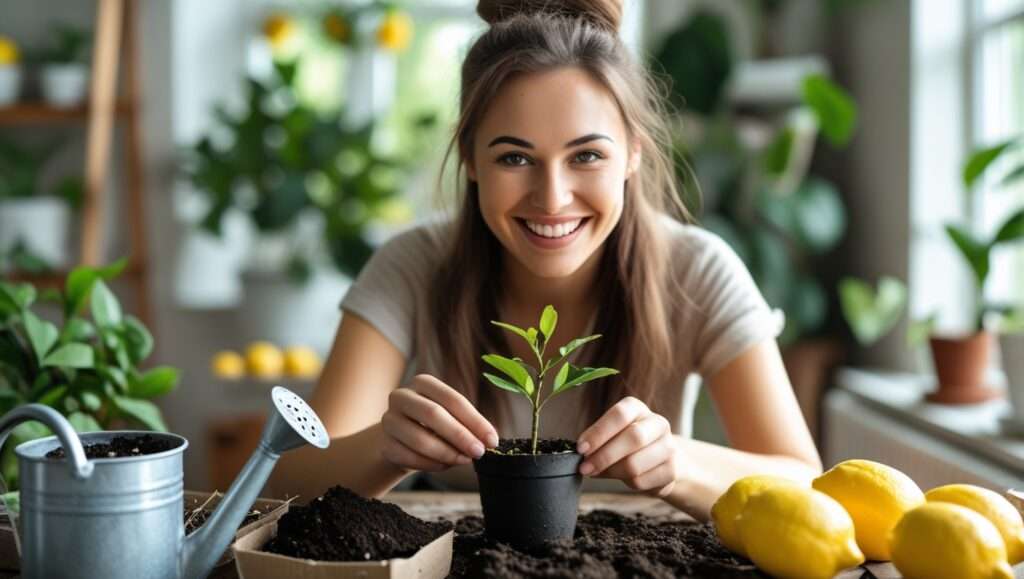
These vibrant plants act as natural air purifiers, filling your home with a subtle, refreshing scent. Watching your tree sprout and mature can be immensely satisfying, offering a sense of accomplishment and a daily connection to nature. Plus, homegrown lemons—free from chemicals—are a tasty reward for your efforts.
Table of Contents
Growth Cycle of a Lemon Tree
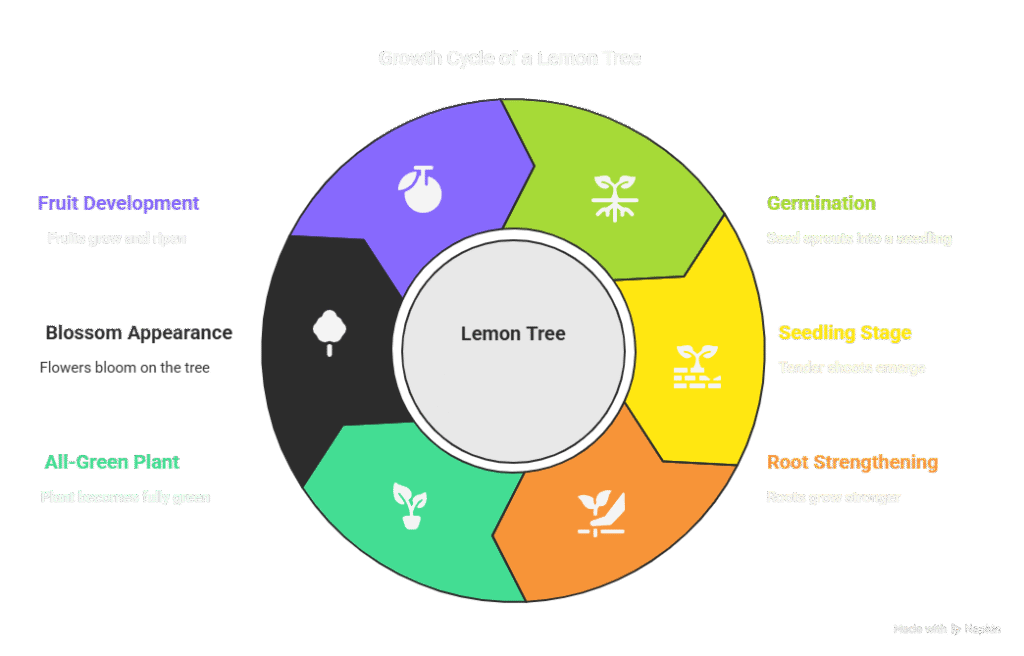
It begins with germination, followed by the seedling stage where tender shoots emerge. As the plant grows, its roots become stronger and this gives rise to an all-green plant. After a few years, blossoms appear, eventually giving way to the golden fruits that make all your nurturing worthwhile. Understanding this rhythm helps tailor care at each crucial stage.
Choosing the Right Lemon Variety for Seed Propagation
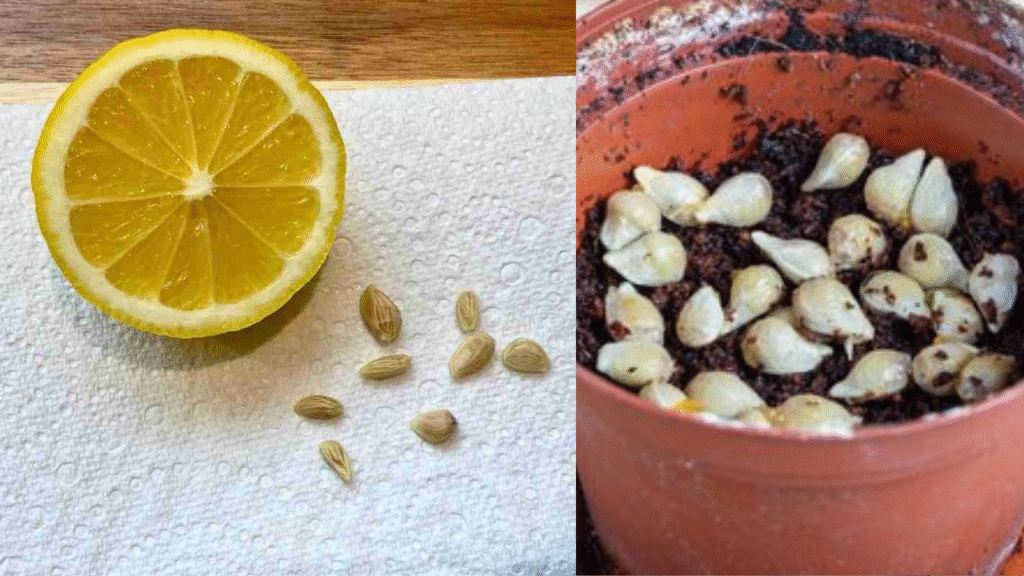
Not all lemons are created equal when it comes to growing from seed. Meyer lemons, with their sweeter flavor and compact growth, are a top choice for indoor growers Lisbon and Eureka are very flexible plant and they are very famous for their sourness. Selecting the right variety ensures your plant adapts well to your indoor environment and offers a plentiful harvest.
Selecting the Perfect Lemon for Seed Harvesting
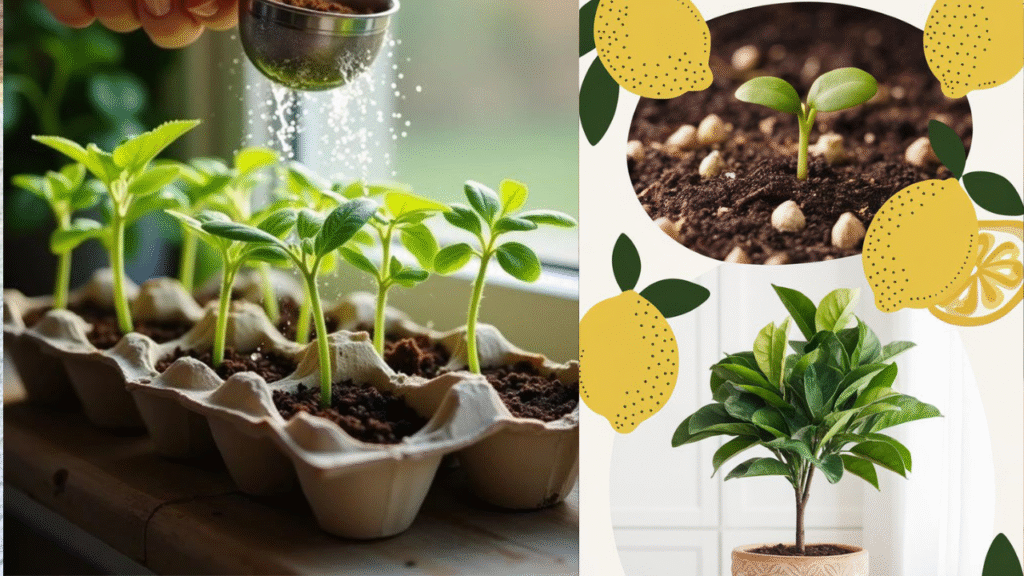
One thing is very important to keep in mind: if your lemon is healthy, your tree will also grow very well. You need to choose a fully ripe and good lemon that doesn’t have any blemishes or rot. Organic lemon is preferred because it does not require many chemicals to grow and thrives in a very organic way. A robust lemon harbors strong, viable seeds ready to spring to life.
How to Extract and Prepare Lemon Seeds for Planting

Whatever lemon you have chosen, cut it finely and be careful not to cut the seed. Gently remove several seeds and rinse them under cool, clean water. Removing all traces of pulp is critical to prevent fungal growth. Fresh seeds have a much higher germination rate, so avoid drying them out if you plan to plant immediately.
Cleaning and Drying Seeds: Essential Pre-Planting Steps

While immediate planting is ideal, if you must store seeds briefly, ensure they are properly cleaned and lightly dried. Lay them on a paper towel and allow them to air dry for a few hours, but avoid letting them become completely desiccated. Properly prepped seeds are much less susceptible to rot or mold during germination.
Do Lemon Seeds Need to Be Germinated Before Planting
Pre-germinating lemon seeds can significantly improve your success rate. While direct planting is possible, germinating seeds first ensures only the most vigorous ones make it to soil. This method saves time and maximizes the likelihood of cultivating a healthy tree.
How to Germinate Lemon Seeds Successfully at Home
Using tissue paper to grow lemons from seed is a one-time experiment. First, wet the tissue paper well and place the seeds inside them and seal them inside a plastic bag. Keep the bag in a warm, dark place, like the top of a refrigerator or inside a kitchen cabinet. Check periodically for tiny roots sprouting—a clear signal it’s time to plant.
Creating the Ideal Environment for Germination
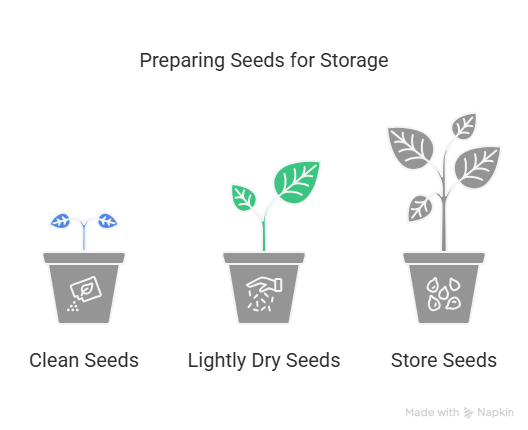
Lemon seeds crave consistent warmth and moisture. A temperature range of 70°F to 80°F creates optimal conditions. Too much cold or dryness can doom the seeds before they even start. Using a heat mat or placing seeds near a warm appliance can give germination efforts a welcome boost.
Soil selection for lemon trees
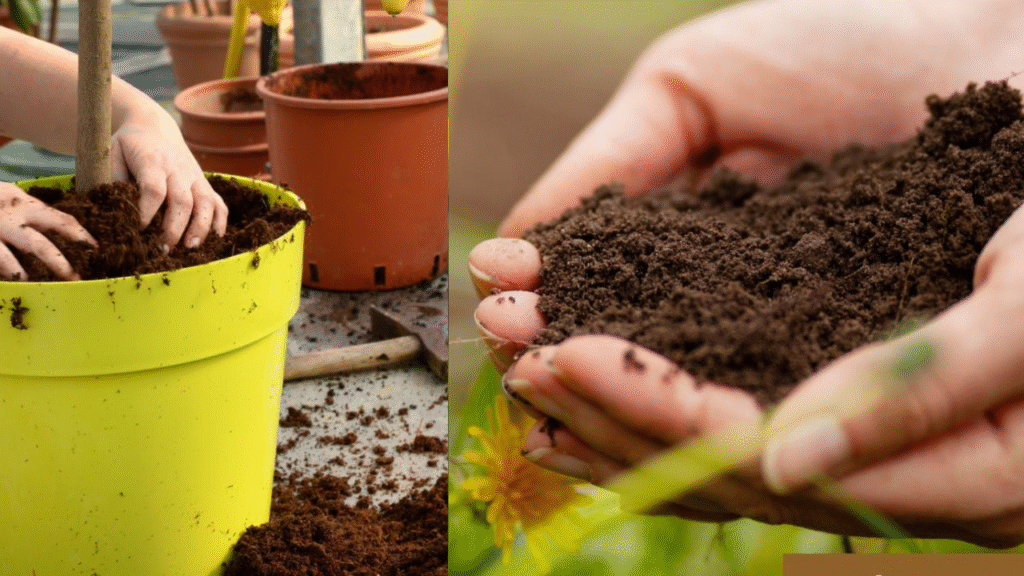
Choose soft, well-drained soil for lemon trees. Potting soil and peat moss retain moisture well and are better at providing air to the plant’s roots. Heavy soil should never be used for growing a lemon tree which can suffocate the tender roots.
Optimal Light, Water, and Temperature Conditions for Seedlings
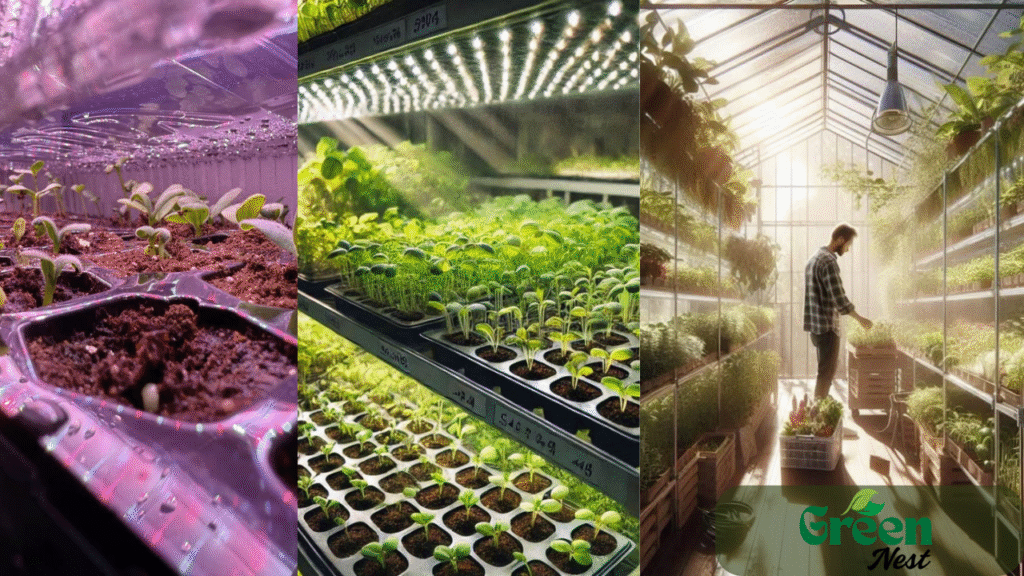
Lemon plants require very good light to grow. For example, plants must receive 10 to 12 hours of light. A sunny south-facing window or a full-spectrum grow light can work wonders. Keep the soil moist but not saturated, and maintain a warm room temperature to foster strong, steady growth.
Common mistakes made when growing lemon trees from seed
We usually water the plants too much. Overwatering causes the roots to rot. Plants become weak due to low light. Poor soil selection can make a big difference in plant growth, causing them to not grow well. Awareness and gentle adjustments make all the difference.
How to Care for Young Lemon Trees in Their Early Stages
Tender young lemon trees need a lot of consistent moisture, sunlight, and balanced fertilizer. Rotate the pot every week for good plant ventilation. A light touch with watering and patience are crucial during this delicate phase.
Signs Your Lemon Seedlings Are Healthy and Thriving
Bright green leaves, sturdy stems, and consistent new growth signal a thriving lemon seedling. Wilting, discoloration, or stunted development may indicate environmental stressors that need quick correction to keep your tree on track.
When and How to Transplant Lemon Trees to Larger
Pots Once seedlings outgrow their starter pots—typically when roots begin to peek out of drainage holes—it’s time for a move. Gently tease the seedling from its container and replant it in a pot about 2 inches wider in diameter, filled with fresh, nutrient-rich soil.
How to Shape and Prune Young Lemon Trees for Strong Growth
Early pruning encourages a bushier, stronger structure. Pinch back the top growth after the seedling reaches about 8–10 inches tall. Remove any weak or crossing branches to promote a balanced, well-ventilated form that will better support fruit in the future.
Feeding Your Lemon Tree: Best Fertilizers and Schedules
Lemon trees are heavy feeders. For good growth of lemon plants, choose fertilizers rich in nitrogen, magnesium and iron. Begin feeding once a month during the growing season and taper off in the winter months when the tree enters a period of rest.
Dealing with Common Lemon Tree Pests and Diseases
Watch for aphids, spider mites, and scale insects—common pests for indoor lemon trees. Neem oil sprays and insecticidal soaps provide effective, eco-friendly control. Keeping leaves clean and ensuring good air circulation also helps stave off fungal issues.
How to Encourage Flowering and Fruit Production
Once your lemon tree from eed matures, mimic seasonal conditions to stimulate blooming. Gradually expose it to cooler temperatures in the winter, reduce watering slightly, and increase light exposure in spring. Fertilizing with a bloom booster high in phosphorus can also coax out fragrant blossoms.
How Long It Takes for a Lemon Tree Grown from Seed to Bear Fruit
Patience is key. Lemon trees grown from seeds usually take a long time to flower and bear fruit, which can take anywhere from3 to 7 years. While it’s a long-term commitment, the satisfaction of harvesting your own homegrown lemons is unparalleled.
Can You Speed Up the Growth and Fruiting of a Lemon Tree
Although it takes a lot of time to grow a lemon tree from seed, if we pay attention to its proper care and watering, it will accelerate its growth. Abundant light, good soil, regular fertilization, and timely pruning can shorten their growing period. Advanced gardeners sometimes graft seedlings onto mature rootstock to induce earlier fruiting.
Indoor vs Outdoor Growing: Choosing the Best Environment
Indoors, lemon tree from seed enjoy stable temperatures but require supplemental lighting in darker months. Outdoors, they bask in natural sunlight but must be protected from frost. Container growing allows flexibility, letting you move plants indoors during colder months.
Winter Care Tips for Indoor Lemon Trees
As temperatures dip, lemon trees enter a slower growth phase. Reduce watering to prevent root rot and ensure the tree gets as much sunlight as possible. Avoid fertilizing until spring, and maintain indoor temperatures above 55°F to keep the plant healthy and happy.
Creative Ways to Display Your Homegrown Lemon Tree
Show off your lemon tree as a stunning centerpiece in a sun-drenched room, or pair it with other Mediterranean plants like lavender and rosemary for a fragrant mini-garden. Decorative ceramic pots or rustic wooden planters add charm and personality, making your lemon tree a standout feature in any space.

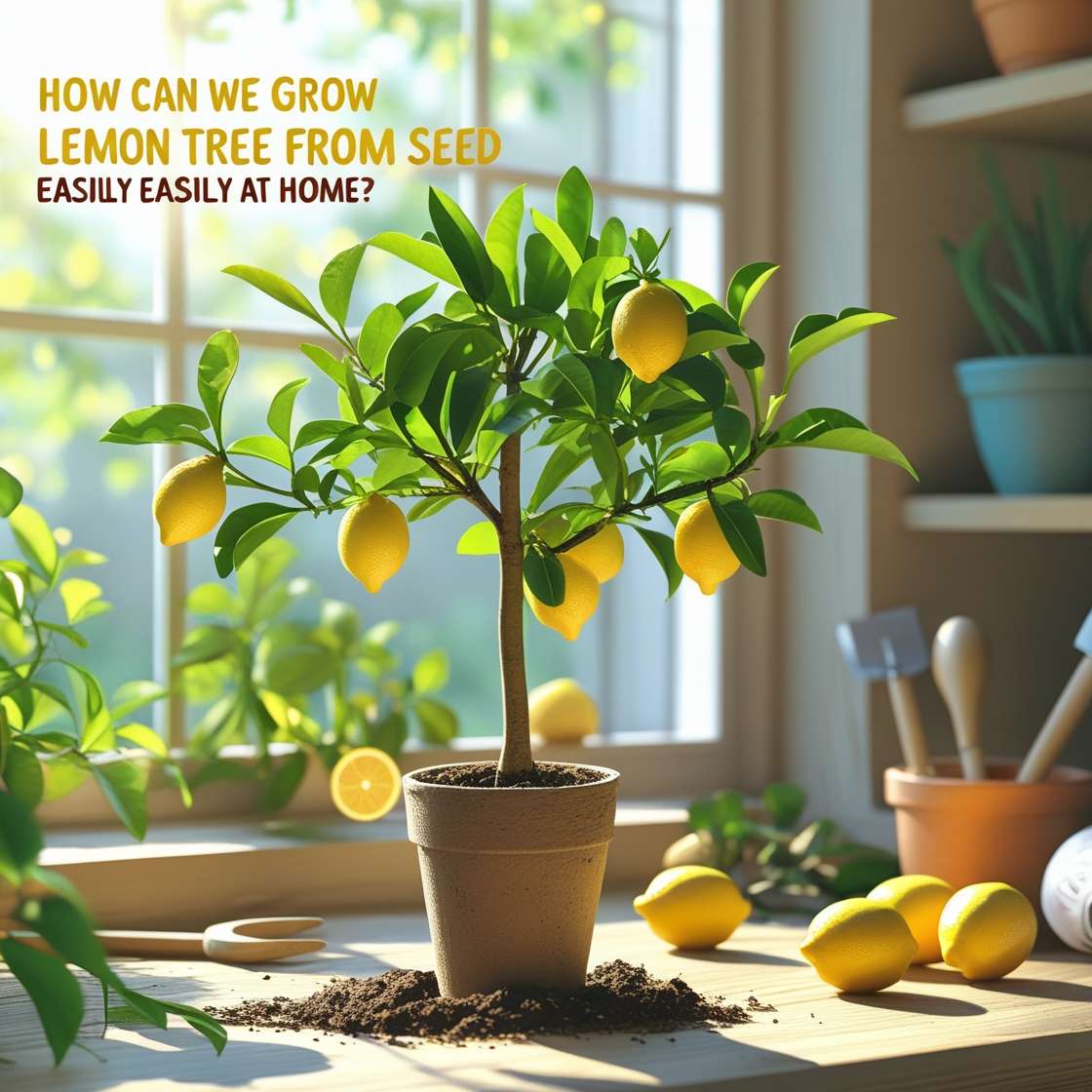




One Comment